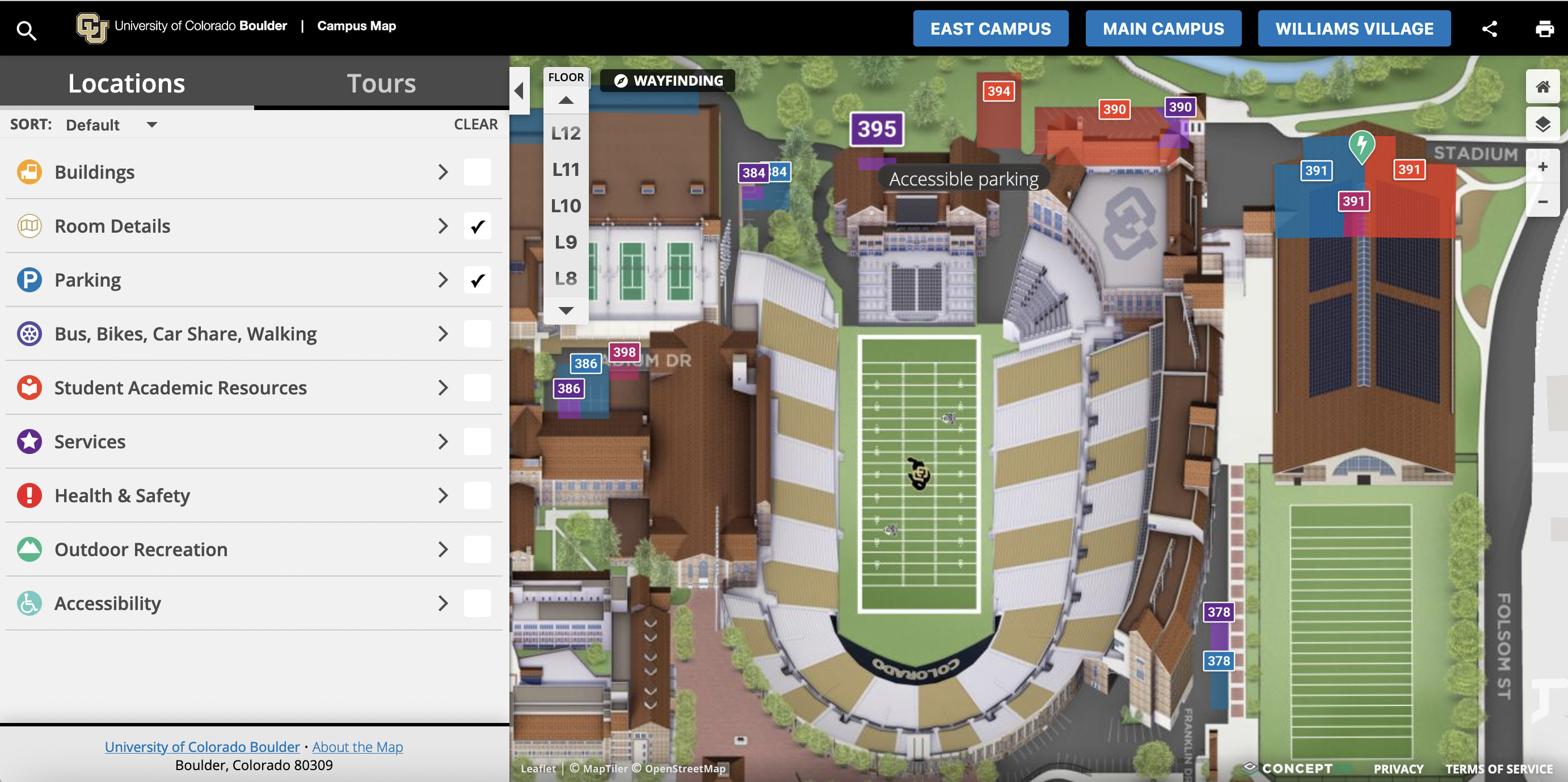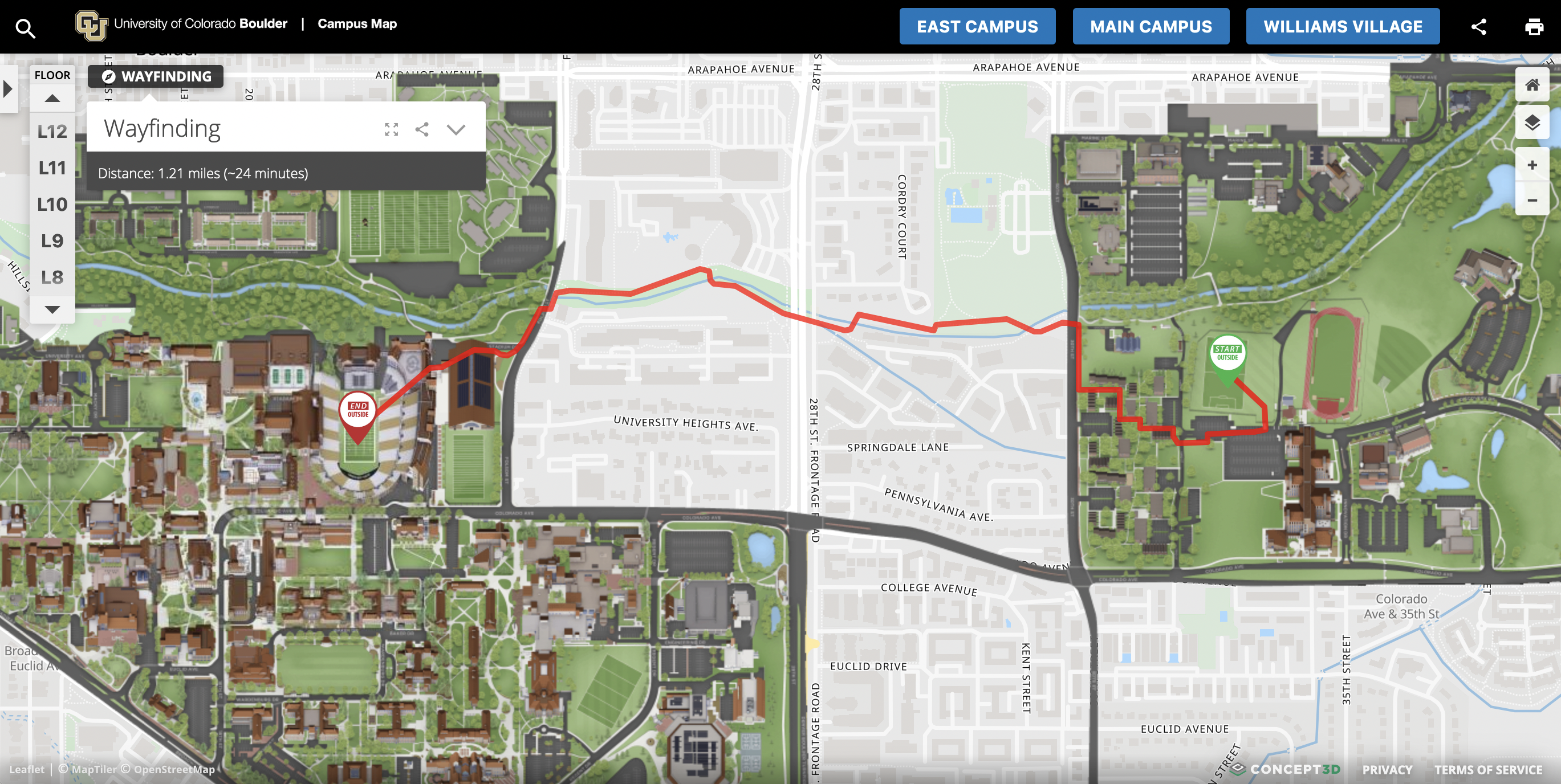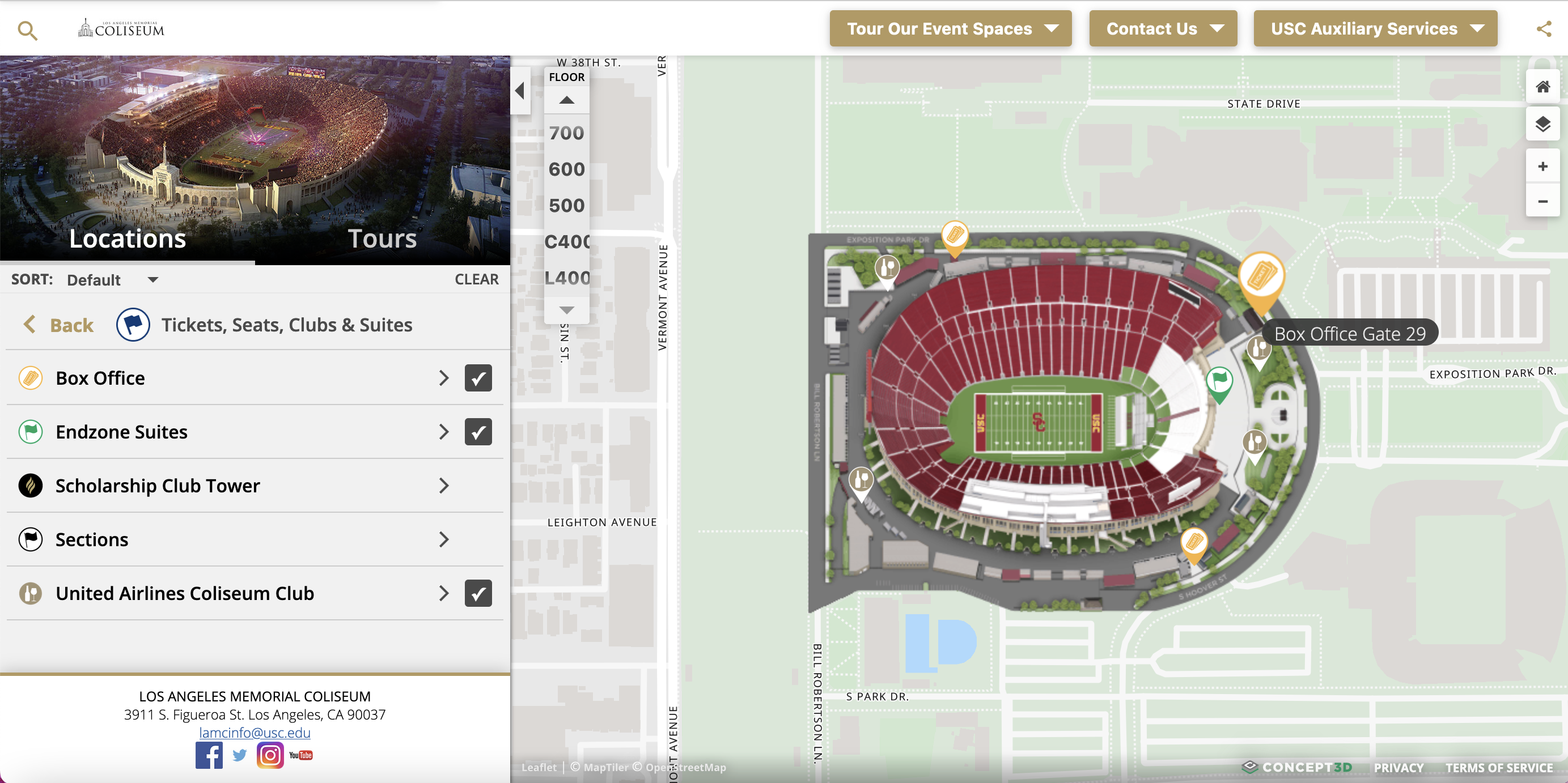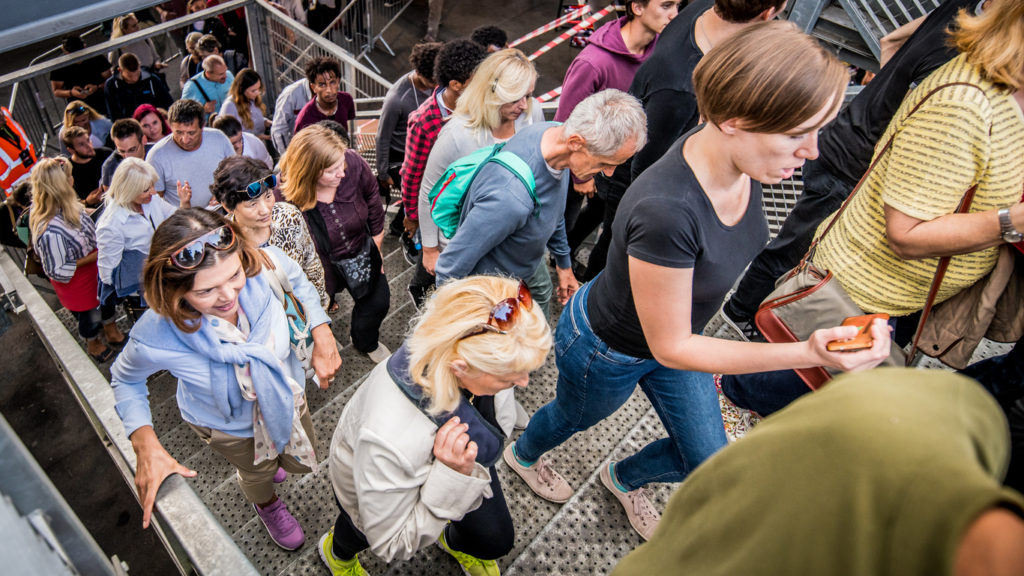There’s light at the end of the tunnel. As sporting events across the country pick up once again, venues and event organizers are looking for ways to elevate the fan experience. A variety of tactics and strategies can help with that goal. But interactive maps have the potential to play a substantial role in building a positive experience—regardless of who wins.
Is your interactive map simply acting as a wayfinding tool? Or does it play an active role in elevating the fan experience? Both tactics can be positive; however, not utilizing the full capabilities of your map may mean a significant missed opportunity as you look to engage your spectators and persuade them to come back next time.
Plenty of studies have aimed to understand just which variables are most important in building that positive experience at sports events. Connect those findings with the potential capabilities of your map solution, and you’ll find three particular areas in which your interactive map can elevate that experience among all of your fans and attendees.
Goal 1: Enhance the purchase experience

You might not think of your interactive map as integral to the ticket purchasing process. For your guests, however, it will be. As they buy their tickets, they’ll also want (and need) to know everything there is to know about parking. That is where your map enters the equation.
For fans who purchase a parking pass with their ticket, include a direct link to the assigned parking lot. Include a Waze button to help them easily save directions to the right spot. Also, include intuitive information on how the parking connects to the venue itself. For example, parking shuttles or tailgating locations are ideal features to highlight on the map and within the parking category.
For fans who have not yet purchased a parking pass, create elements within your map that include all relevant parking, transportation, and rideshare locations directly on the map. That includes a link to the option for later parking reservations, if necessary. You can now link directly to this information from any purchase confirmation messages and other follow-ups, ensuring that guests never get confused on how to get where they need to go. This simplifies the fan experience before the big day.
Real-Time Frustration Reduction
If you have live parking capacity data, your interactive map can display it. Use the API to show red, yellow, and green capacity for individual parking locations. This lets fans know exactly where they need to go to avoid jams or redirects on the day of the event.
Finally, it pays to enhance the driving experience to your sporting event on the day of the big game. Include Waze directions, as well as Google and Apple Maps links, that go to the venue and individual parking locations. Now, you can build segmented communications with direct links to individual parking lots, depending on which parking spot your fans have booked.

A top-down look at CU Boulder’s Interactive Map. A red line stretches from the running track to the football stadium across campus to help sports event fans navigate from point a to point b with Concept3D’s wayfinding feature.
Goal 2: Prepare fans before they arrive
Beyond parking, your fans will also need a lot of other information that helps them navigate their way around on the big day. They’ll be likely to look for that information in the days leading up to the event to prepare themselves and plan accordingly. Once again, your interactive map can help.
For example, your map can display a number of general locations that are potentially relevant to the fan experience of all attendees. Options include:
- All parking locations and public transportation access
- Individual gate locations, potentially even with additional information like the average wait time at each gate
- Approved tailgate areas in the parking lots and elsewhere
- Locations of all specialty food and beverage spots, like burgers, barbecue, Asian food, Mexican cuisine, and more
- ADA entrances and accessible navigational routes for anyone who needs them
- Locations of all restrooms inside and outside of the venue
- Locations of merchandise and pop-up stores both inside and outside the arena
Of course, it doesn’t end there. Any physical location your audience is looking for can be represented on the map. It also helps to show general ticketing sections; your audience can understand basic wayfinding long before they arrive at the venue.

Premium Experience Benefits
Premium ticket holders, of course, might have different and more nuanced expectations when it comes to their fan experience. Before the event, they might need to know any or all of the following information:
- Individual parking locations, as specific as the exact parking spot depending on the venue and booked experience
- Specific gate entrances, especially at venues where premium ticket holders can expect expedited and more convenient entry at some gates
- Individual suite locations, as well as exterior and interior wayfinding options to get to that exact suite
Finally, your interactive map can help to incentivize fans to arrive early. This will distribute and better manage the flow of foot traffic at the venue. You can:
- Show the location of signing activities before the game begins.
- Create a self-guided virtual art or history tour that showcases unique spots and creates a narrative history of either the venue or the team.
- Create a category for selfie locations where the lighting is great, the background is better, and some signage of your team or arena is clearly visible.
Virtual tours embedded into your venue map can have immense benefits for every fan experience. They can help your fans both familiarize themselves with the venue and incentivize them to arrive early. Use it to highlight special locations like the locker room, trophy hall, team hall of fame, and more.
Goal 3: Optimize the onsite experience

Of course, the potential of an interactive map doesn’t end when fans arrive at the venue on game day. Here, its strengths shift to an integrated system with your physical signage that allows fans to fully optimize their onsite experience, reducing any confusion or frustration in the process.
Signage Integrations
To start, consider adding a QR code directly to all physical signage around the venue that leads directly to the interactive map. Wayfinding signage that points to a specific seating section, for instance, can lead directly to the functionality of your map that integrates walking instructions. All physical signage can benefit from a virtual counterpart embedded within your map.
The same thing is true for your digital signage. Here, the possibilities of your interactive map go even further beyond QR codes. You can also add thumbnails and sections of the map that create a more unified, integrated experience.
Event Integrations
Meanwhile, the game day program can also link directly to your virtual map. A directory that specifically points out the restrooms, for example, can link to the map category with all restrooms highlighted. Then fans can easily pick one close to them and find their way to it. You can use similar programs or map integrations to highlight anything else in the venue. Options range from selfie locations to the different types of food and beverage booths throughout the arena.
Finally, this integration can carry into your visitors’ mobile devices, as well. If your venue or sports team has an app that fans can use, easy API integrations can add the interactive map as a tab or feature directly available within the app. That, in turn, allows the map to be highly visible in any mobile promotions before and during the event. You can maximize opportunities for your audience to engage with it and find what they’re looking for.
Leveraging your interactive map to optimize the fan experience
With sporting events coming back this summer and fall, families and hardcore fans alike are looking to get back out there. They’ll love to cheer on their favorite team or simply watch an event designed to raise awareness and funds for a good cause. But of course, they can only fully enjoy their experience if the roadblocks are cleared for them.
That’s where interactive maps can enter the equation. From the moment fans book their ticket all the way through game day, a well-designed digital map can be a crucial companion for all audiences looking to find their way, reduce confusion, and enjoy their time.
Done well, this map won’t just be a wayfinding tool. Instead, it can become an active part of enhancing the experience. Small additions like selfie locations or self-guided venue tours can go a long way to entertain fans and keep them coming back. These additions can also ensure that visitors enjoy their fan experience every step of the way.
The good news is this: you don’t need to be on your own when building these experiences through your interactive map. With Concept3D, you’ll have a reliable partner on your side. We can do more than provide the software and platform to build the map. Our team can also help you design experiences your audience will love. We have plenty of experience with other sporting venues and would love to apply that experience to yours. Contact us to start the conversation.

